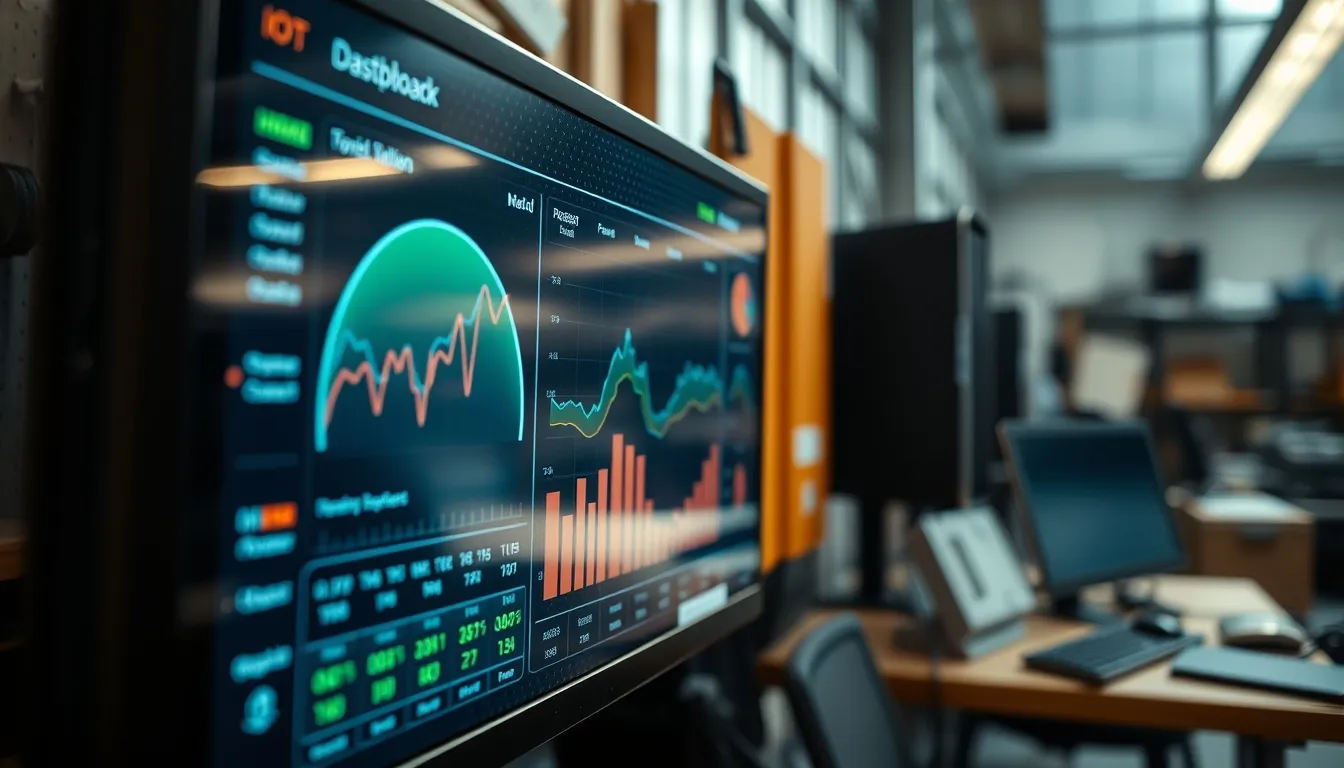Total Worker Health® stands as a transformative framework reshaping how human resources approach safety and productivity. This comprehensive strategy offers a blueprint for fostering healthier, more engaged workforces amid evolving workplace dynamics. Cutting-edge technologies, data-driven insights, and a culture of well-being are redefining occupational health, promising a future where both employees and businesses thrive.
Embracing Total Worker Health® in Human Resources

The Total Worker Health® (TWH)framework, developed by the National Institute for Occupational Safety and Health (NIOSH), provides a comprehensive strategy to enhance worker safety and promote overall well-being. By implementing TWH strategies, organizations can see increased productivity, reduced absenteeism, lower healthcare costs, and improved talent attraction and retention.
Key components of Total Worker Health®
The key components of Total Worker Health®include several fundamental elements:
| Component | Description |
|---|---|
| Hazard Prevention and Control | Minimizing potential risks in the workplace. |
| Built Environment and Community Support | Fostering a supportive atmosphere beyond the workspace. |
| Comprehensive Benefits | Providing a robust safety net for employees. |
| Health-Focused Leadership and Policies | Emphasizing the importance of health in organizational culture. |
| Technology Integration and Flexible Work Arrangements | Adapting to modern demands to enhance worker satisfaction. |
How does implementing TWH impact productivity and human resources strategies?
Implementing TWH can lead to significant enhancements in organizational productivity. By reducing workplace hazards and promoting health, companies often experience a drop in absenteeism and an increase in productivity. Healthcare costs typically decrease due to lower injury rates and improved overall health. This approach also enhances employee engagement and retention, contributing to a more stable and motivated workforce.
Innovative Ergonomic Trends Shaping Workplace Safety
As workplaces evolve, ergonomic challenges and solutions adapt. Addressing these trends complements the Total Worker Health® framework by preventing musculoskeletal disorders, optimizing workstation design, and enhancing overall workplace safety.
Cutting-edge solutions in workplace ergonomics for Human Resources

Recent innovative solutions in workplace ergonomics have transformed safety approaches.AI-driven ergonomic assessments offer personalized evaluations of workplace setups, identifying potential risks and suggesting improvements.Wearable technology provides real-time data on posture and movement, helping workers avoid injury. Furthermore, adaptable workstations cater to diverse employee needs, ensuring comfort and reducing strain.
What role do VR and AR play in safety training?
Virtual Reality (VR)and Augmented Reality (AR)are revolutionizing safety training by offering immersive experiences that mimic real-life scenarios. This approach allows employees to practice responses to potential hazards in a controlled setting, increasing their preparedness and reducing accident likelihood. As a result, VR and AR have become invaluable tools in enhancing workplace safety training programs.
Leveraging data for comprehensive health assessments
Data-driven approaches are crucial for understanding and improving employee health. By leveraging comprehensive data, organizations can tailor interventions to specific needs, ensuring effective health outcomes. An example is the NIOSH Worker Well-Being Questionnaire, which evaluates various dimensions of health, allowing for targeted interventions.
Framework for effective health assessment
A structured framework for effective health assessment involves four key components:
- Systematic Data Collection– provides detailed insights into employee health.
- Evidence-Based Priority Setting– ensures that interventions focus on the most critical areas.
- Targeted Program Implementation– directly addresses these priorities.
- Continuous Evaluation and Feedback– allows for ongoing refinement of health strategies.
How can data-driven assessments lead to targeted interventions?
Data-driven assessments enable organizations to identify specific health challenges and opportunities. By analyzing collected data, businesses can pinpoint areas requiring attention and develop targeted interventions that directly address these needs. This approach not only improves the effectiveness of health programs but also optimizes resource allocation, ensuring maximum impact.
Leveraging Technology for Enhanced Occupational Health
Technological advancements are revolutionizing occupational health, offering innovative solutions for monitoring, prevention, and intervention. These technologies allow for more personalized and proactive approaches to worker health and safety.
Technological innovations in health monitoring

Modern technology facilitates proactive health monitoring and intervention through various innovations.Predictive analytics assess risks and identify potential health issues before they become serious.Telemedicine provides accessible healthcare options, particularly beneficial for remote workers. Additionally,IoT devices monitor environmental conditions, ensuring safe workspaces.
How does blockchain ensure secure health data management?
Blockchain technology plays a crucial role in ensuring the security and privacy of health data within occupational health programs. By using decentralized and encrypted systems, blockchain prevents unauthorized access and data breaches, maintaining the integrity of sensitive information. This level of security builds trust among employees and encourages participation in health initiatives.
Fostering a Culture of Well-being in the Workplace: A Human Resources Perspective
Creating a workplace culture that prioritizes health and well-being is essential for long-term success. Such a culture leads to improved morale, increased engagement, and better overall health outcomes for employees.
Key elements of a health-focused workplace culture
A successful health-focused workplace culture is built on several key elements:
- Leadership Commitment and role modeling set the tone for organizational values.
- Open Communication Channels encourage dialogue and feedback.
- Employee Involvement in health initiatives fosters a sense of ownership.
- Recognizing Health-Promoting Behaviors reinforces positive actions.
- Work-Life Balance Policies ensure employees maintain well-being.
What are the benefits of work-life balance policies?
Work-life balance policies offer numerous benefits, including increased employee satisfaction and retention. By allowing employees to manage their professional and personal lives effectively, these policies reduce stress and burnout, leading to higher productivity and morale. Moreover, they attract top talent who value flexibility and a supportive work environment.
Prioritizing Mental Health in the Modern Workplace
Mental health has become a critical component of occupational health, especially in light of recent global events. By prioritizing mental health, organizations can support employee well-being, reduce burnout, and improve overall workplace productivity.
Strategies for supporting mental health at work
Effective strategies for supporting mental health at work include several impactful measures:
- Destigmatization Campaigns raise awareness and normalize mental health discussions.
- Access to Mental Health Resources provides essential support.
- Stress Management Programs equip employees with coping mechanisms.
- Resilience Training enhances their ability to handle challenges.
- Regular Mental Health Check-ins ensure ongoing support.
Why are regular mental health check-ins important?
Regular mental health check-ins play a vital role in preventing burnout and promoting mental wellness. These interactions offer employees a safe space to discuss concerns and receive support, helping to identify potential stressors early. By addressing issues proactively, organizations can foster a healthier, more engaged workforce.
Tailoring Occupational Health Strategies for Remote and Hybrid Work
The rise of remote and hybrid work models necessitates adapting occupational health strategies to ensure effectiveness in diverse environments. These adaptations help maintain employee well-being and productivity, regardless of work location.
Effective health initiatives for remote workers

Supporting remote workers requires specific health initiatives tailored to their unique needs.Ergonomic guidance for home offices ensures that remote setups minimize strain and injury.Virtual health and wellness programs provide accessible resources to maintain physical and mental health. Additionally,digital collaboration tools foster team cohesion and communication, while time management and boundary-setting training help employees balance work and personal life effectively.
How can digital tools enhance team cohesion?
Digital tools are essential for maintaining strong team cohesion in remote settings. Platforms that facilitate communication and collaboration help teams stay connected and aligned, fostering a sense of unity and purpose. By enabling seamless interaction, these tools ensure that team dynamics remain strong, even when physically apart.
Demonstrating ROI in Occupational Health Programs
To secure ongoing support for occupational health initiatives, organizations must demonstrate their value through clear metrics and analyses, ensuring effectiveness and continued investment.
Quantifying the benefits of health programs
Quantifying the benefits of health programs involves:
- Establishing Clear Metrics and Benchmarks for evaluation.
- Regular Cost-Benefit Analyses of program costs and outcomes.
- Tracking Long-Term Health Trends for program impact insights.
- Measuring Productivity and Performance Impacts.
- Reporting on Employee Satisfaction and Retention.
What metrics indicate successful health programs?
Successful health programs show reductions in absenteeism and healthcare costs, improved employee satisfaction, and productivity levels, along with high retention rates and positive feedback.
Measuring ROI is crucial for ensuring ongoing support and effectiveness of health programs, reinforcing the Total Worker Health® framework’s goals.
By implementing these multifaceted approaches, organizations can create safer, healthier, and more productive work environments that benefit both employees and the bottom line. Organizations are encouraged to adopt these practices to foster a more supportive and thriving workplace culture.


